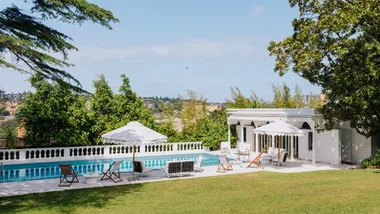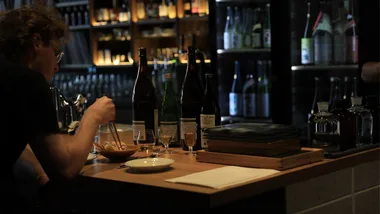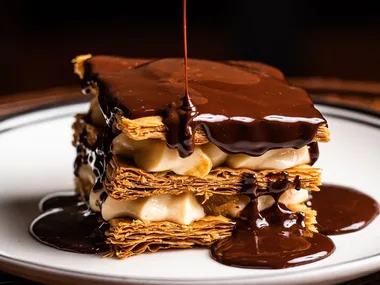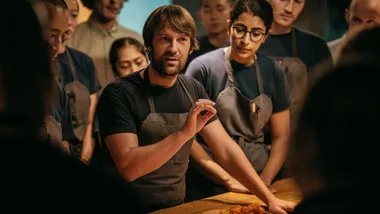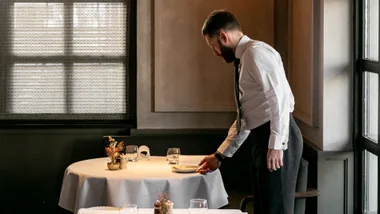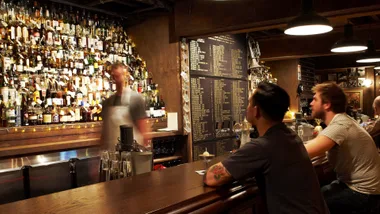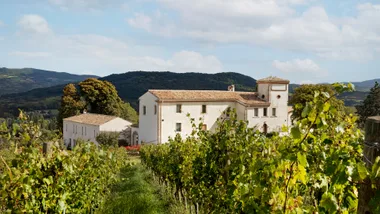Lunar New Year is a time to gather, celebrate and feast – sometimes to (very memorable) excess. Lee Tran Lam calls on local chefs, restaurateurs and other food personalities to share their recollections of the holiday.
Khanh Nguyen
King Clarence, Sydney
Every Lunar New Year, I cook[ed] for my [former] business partner Adi Halim’s family. It’s a very premium menu: hand-picked mud crabs, abalone, lobster, it’s a chance to go all out. One year, we figured out what it’d cost if we charged for it and it turned out to be almost $1000 a head! It’s jamón, caviar, foie gras – everything. I did a massive yee sang (prosperity toss salad) for them: yee sang is usually trout or salmon, but I put in raw scallop, lobster, sturgeon caviar, salmon caviar, Yarra Valley shiraz gin caviar. That’s probably the most lavish one of all. They did toss it, like you’re meant to, but didn’t go hard. Some people do get overexcited and it goes everywhere. That brings you luck, right?
Giselle Sim
Croff Bakehouse, Perth
Making pineapple tarts for Chinese New Year’s arrival – that’s a tradition my mum put in place. Four weeks in advance, Mum would buy ingredients and show us recipes. She’d have “measurements” that aren’t how we’d measure things – like a Chinese soup spoon or old soup bowl. It was confusing. She’d show us how to beat the dough and do flower shapes on the tarts. We’d work through weekends and evenings to get them already. It took so long! There was only one oven and one mixer and we’d make up to 500 tarts. My mum would need me, all my sisters and my aunt. We’d fill 10 boxes, ready for gifting. And then I didn’t even get to eat them, they were all given away to relatives!
Aileen Seo
Baguette Studios, Melbourne
Winter in Korea is cold and bitter, so your hands freeze when you go out. When I was young, I would carry a hand warmer with me, and my mother would hold my frozen hand when I forgot it. To me, Seollal (Korean New Year) is like a hand warmer. At my grandparents’ house, my relatives would prepare for Seollal – difficult with 30 people gathered, but everyone helped and laughed without complaints. On the morning of Seollal, everyone would wake early, open the windows and clean, in the cold air. They’d pray to ancestors and eat tteokguk (rice cake soup). In Australia, Seollal is in summer and a lot smaller, because my relatives are in Korea. After Seollal breakfast, we exchange New Year’s greetings and take a walk together. Now, wrinkled and warm hands hold my hands instead of the hand-warmer of winter.
Arthur Tong
Tea Craft, Sydney
Like many Chinese families, we have “the tray of togetherness”. It holds roasted watermelon seeds from Northern China. As kids, one of the challenges my brother and I set for ourselves was cracking open these seeds and extracting them as a whole – like how people eat crustraceans. With watermelon seeds, you put them in your teeth vertically and bite down with the right amount of force, gently pull the seed, and eat them that way. The homonym for watermelon seed is the same word for offspring or son. You have them for New Year, because it’s a symbol of fertility and wealth.
Jennifer Wong
Host of Chopsticks Or Fork? on ABC iView
Filling the special Lunar New Year lacquer box was a great joy: I remember the sound of the pumpkin seeds hitting the plastic tray, they’d be preserved in sugar. There was sweet winter melon, cut into strips – essentially rectangular blocks of sugar, masquerading as something covering a melon. There’d be dried longan nuts, also encrusted with sugar. There’d be dried curls of coconut; everything was sugared. The idea of sweetness is a common theme for new year: the idea of starting new year on a sweet note. The other sweet thing we’d have is year cake – straight-up sugar in jelly form – before going to school. I would have these celebratory mornings, a whole thing that happened before I even went to school that day.
Junda Khoo
Ho Jiak, Sydney
For the first 15 years of my life, we celebrated Lunar New Year in Malaysia. It was my favourite time of the year, because it’s a long holiday. As a kid who didn’t enjoy studying, that was fantastic. Grandmother would cook for everyone, we’d all get together – uncles from Hong Kong, the UK, they’d all fly back. We’d have firecrackers, and Dad would sneak into our rooms and put red packets of lucky money under our pillow, like the tooth fairy. Then I came to Sydney when I was 16 – just me and my brother. That was my first Chinese New Year not in Malaysia. We still had to go to school, there were no celebrations, no public holidays. I felt sad, this was my first Chinese New Year without my family, red packets, fireworks, everything. Because of that tormenting experience, ever since I started Ho Jiak, I wanted to provide a space for diners who are not with their families, for people to come to our restaurants, to get a feast, that’s why we have lion dance shows every year. It’s noisy, it’s festive, it’s a time to celebrate.

